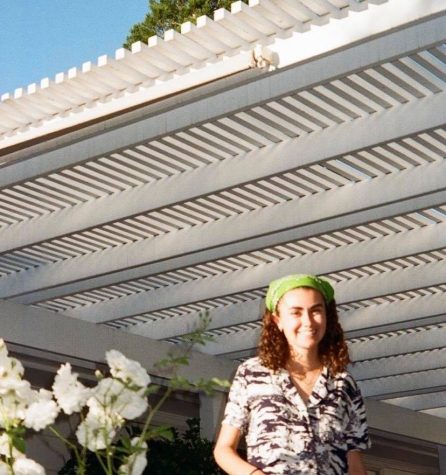Activist Marco Saavedra in conversation about “The Infiltrators”

September 23, 2021
Marco Saavedra and Viridiana “Viri” Martinez, two National Immigrant Youth Alliance members, had been living in the U.S. since they were children, when border patrol agents arrested them and sent them to a detention center.
The catch? They were voluntarily detained at the Broward County Transitional Center in Pompano Beach, Florida in 2012. The activists, whose mission as part of the Development, Relief and Education for Alien Minors (DREAM) Act to fight deportations were planning their most ambitious civil-disobedience project yet: break out those in the detention center from the inside. Filmmakers Cristna Ibarra and Alex Rivera documented this backwards prison break on camera, and the result was “The Infiltrators,” winner of the “NEXT Innovator” and “Audience award” at the 2019 Sundance Film Festival.
Macalester’s Department of Multicultural Life streamed “The Infiltrators” on Monday as a part of Latinx Heritage Month programming, and followed the screening with a Q&A with the real Marco Saavedra, who joined the event via Zoom.
The story is almost unbelievable: Saavedra and Martinez were arrested on purpose in order to expose the absurdities and discrimination within the detention center. “The Infiltrators” combines documented footage Ibarra and Rivera captured of National Immigrant Youth Alliance activists in real-time, along with pre-scripted reenactments of what happened inside the center with actors playing Saavedra and Martinez. The filmmakers and activists spent two days in memory workshops, going through the plans for the film scene by scene and pouring over every minute detail of the “reverse heist.” Ibarra and Rivera wanted to know everything, from the size of the cells to the way the courtyard worked. By 2019, the filmmakers had a groundbreaking docu-thriller.
A prime example of this hybrid style of filmmaking can be seen when Saavedra appears at the detention center to turn himself in. A recorded phone call of the real conversation he had with the border patrol agent in 2012 sounds over the visual of actors playing out this interaction.
The filmmakers knew from the beginning that hiding the identities of the undocumented immigrants featured in the film wasn’t an option — the whole point of Saavedra and Martinez’s radical actions was to bring those held in the detention centers into the spotlight. Having people with real faces and real names stand up and tell their stories is undeniably humanizing.
10 years later, the cause is pressing and not much has changed.
“[Immigration] seems like a political game for politicians [to find] the right time to compromise or play with people’s lives,” Saavedra said. “It’s easy to lose hope, but I think the hope has to remain in the community, in the work and the resilience people have.”
2012 was a unique time in the fight against deportations with the introduction of the Deferred Action for Childhood Arrivals (DACA) and amendments to the DREAM Act. The National Immigrant Youth Alliance saw an opening and took direct action.
“My whole lifetime I’ve lived under anti-immigrant regimes,” Saavedra said. “What happened in 2012 was a coalescence of dedicated activists, but also a political opportunity to seize the moment. You had an administration under Obama that lent itself to be accountable for saying that they were not targeting high priority immigrant folks when in fact they were, but at least you could have accountability.”
While detained, the activists worked with Claudio Rojas, an Argentinian immigrant who was already in the detention center. Their system was to pass out a phone number to the other detainees that would connect them with Martinez and the rest of the DREAM Act team; over the phone, the detainees would fill out an intake form that would allow the activists to create petitions for their release.
Although the DREAM Act was successful in freeing a number of those in the detention center, not everything went according to plan. A month after “The Infiltrators” premiered at the Sundance Film Festival in 2019, Rojas was detained again and deported to Argentina, where he remained for two years before finally coming back to the U.S. just last month.
“I felt like [Rojas] was the main organizer in the campaign and I was just taking direction from him,” Saavedra said. “I felt so guilty when he was still detained when I was released and he was deported while this film was being premiered.”
Today, the Broward County Transitional Center is still in operation just one hour north of Miami under the management of the GEO Group, the second largest private prison corporation in the U.S. Saavedra and activists from the National Immigrant Youth Alliance continue to work within the movement in a variety of ways. Saavedra works supporting immigrants through his family’s restaurant in the South Bronx and other organizing activities.
Saavedra’s advice for activism is to find community wherever you can.
“Finding community, finding the right people, whether it be classmates, academic advisors or courses, that really challenge the parameters,” Saavedra said.
To stream “The Infiltrators” and learn more, go to infiltratorsfilm.com.













